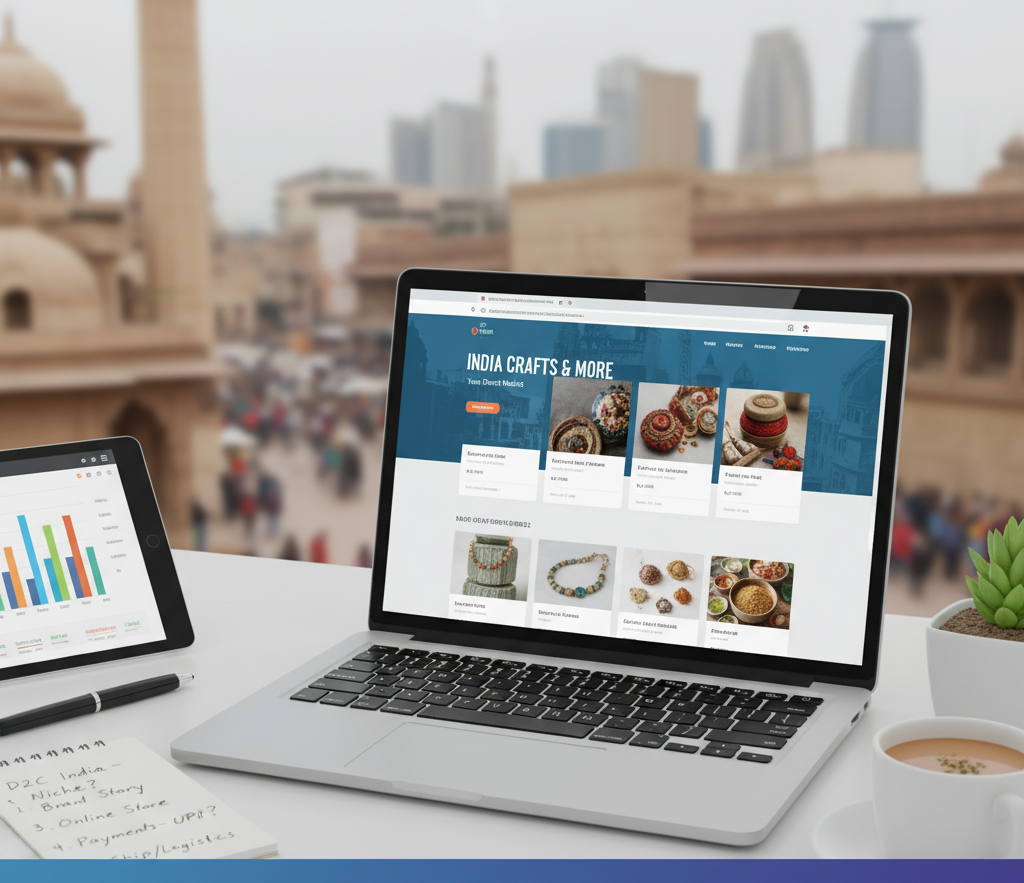Discover why every seller needs a D2C marketplace in 2025. Learn how direct-to-consumer platforms boost seller growth, improve digital sales, and unlock new online vendor benefits through local online sales and free listing sites.
In today’s competitive digital economy, sellers can no longer rely solely on traditional retail or third-party platforms to grow. The D2C marketplace for sellers (Direct-to-Consumer marketplace) is becoming the game-changer of 2025. By directly connecting with buyers, eliminating unnecessary middlemen, and offering full control over branding, a D2C platform opens doors to faster growth and long-term sustainability.
If you’re still unsure whether your business needs a direct-to-consumer approach, this article will walk you through the benefits of D2C marketplaces, how they impact seller growth, and why 2025 is the perfect time to adopt this model.
What is a D2C Marketplace for Sellers?
A D2C marketplace is an online platform where sellers can list their products directly for consumers without relying on traditional distributors or retailers. Unlike conventional eCommerce giants that dominate pricing and branding, a D2C setup empowers sellers to:
- Retain brand identity
- Build customer loyalty
- Access direct insights into buyer behavior
- Earn higher margins by avoiding third-party costs
Think of it as the future of online vendor benefits, where sellers not only sell but also establish stronger relationships with their buyers.
Why D2C Marketplaces Are the Future of 2025
The retail and eCommerce landscape has shifted dramatically in the past few years. Customers now demand personalization, transparency, and convenience. For sellers, this means that adapting to a direct-to-consumer platform is no longer optional—it’s essential.
Here’s why 2025 marks the turning point:
- Digital Sales Are Exploding
With more consumers shopping online than ever, sellers cannot afford to miss out on digital sales channels. - Brand Control is Key
Unlike third-party marketplaces, D2C platforms let sellers control their pricing, branding, and customer engagement. - Faster Growth Opportunities
Direct connections with customers lead to repeat purchases, personalized offers, and long-term loyalty. - Affordable Online Presence
Thanks to free listing sites and cost-effective tools, sellers can now set up their own storefronts with minimal investment.
Benefits of Joining a D2C Marketplace for Sellers
The advantages of shifting towards a D2C marketplace for sellers are massive. Let’s break them down:
1. Better Profit Margins
Cutting out intermediaries means sellers retain higher profits, fueling faster business expansion.
2. Direct Customer Relationships
You get firsthand access to consumer data, preferences, and feedback—key insights that third-party platforms often hide.
3. Enhanced Seller Growth
A D2C model gives sellers the freedom to experiment with digital sales strategies like seasonal offers, loyalty programs, and influencer marketing.
4. Stronger Local Online Sales
If you’re a small or medium business, D2C platforms help you capture nearby customers searching for local online sales opportunities.
5. Scalable eCommerce Marketplace
From startups to established businesses, a D2C setup is designed to grow with you. Unlike traditional distribution, it’s scalable without heavy investment.
D2C Marketplace vs Traditional eCommerce: What’s the Difference?
| Feature | D2C Marketplace | Traditional eCommerce Marketplace |
|---|---|---|
| Branding | Full seller control | Limited, dominated by platform |
| Profits | Higher margins | Shared with platform |
| Customer Data | Direct access | Restricted or hidden |
| Growth Speed | Faster, scalable | Slower, competitive |
| Local Reach | Supports local online sales | Less flexible |
This comparison shows why sellers are rapidly switching to direct-to-consumer platforms.
How Sellers Can Get Started with a D2C Marketplace in 2025
Adopting a D2C marketplace for sellers doesn’t have to be complicated. Here are simple steps:
- Choose the Right Platform – Pick an eCommerce marketplace that offers seller-friendly tools, customization, and support.
- List Products Strategically – Start with high-demand items on free listing sites to attract traffic.
- Leverage Digital Sales – Use SEO, social media, and email marketing to boost visibility.
- Engage Customers Directly – Create loyalty programs, collect reviews, and offer personalized deals.
- Scale Smartly – Once traction builds, expand to new categories and local online sales regions.
Final Thoughts: Why Every Seller Must Embrace D2C in 2025
The future of selling is direct-to-consumer. Whether you’re a small vendor looking for local online sales or a brand aiming for global reach, the D2C marketplace for sellers offers unmatched flexibility, profitability, and control.
In 2025, sellers who adopt D2C early will be the ones leading the digital economy tomorrow.
👉 Don’t wait for competition to get ahead. Start building your D2C marketplace journey today and unlock new growth opportunities.




.jpeg)
Comments
No comments yet. Be the first to comment!